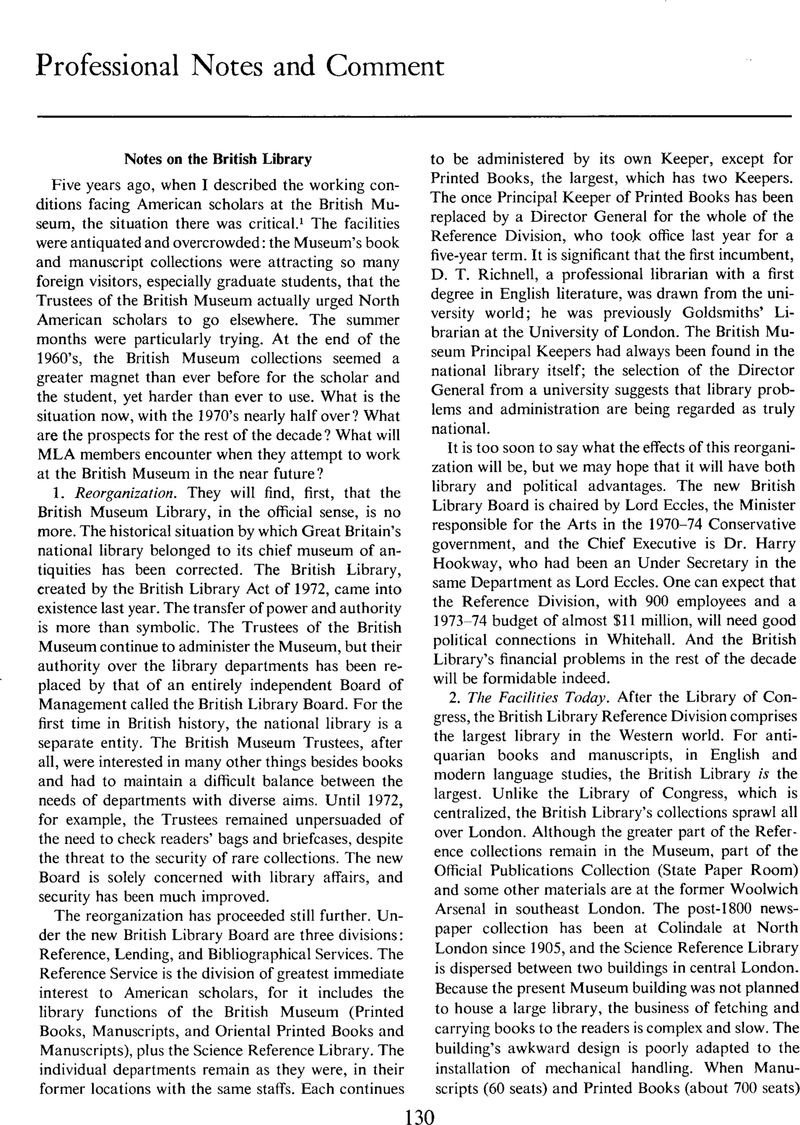No CrossRef data available.
Article contents
Professional Notes and Comment
Published online by Cambridge University Press: 01 December 2020
Abstract

Information
- Type
- Other
- Information
- Copyright
- Copyright © Modern Language Association of America, 1975
References
1 “The Facilities of the British Museum,” PMLA, 85 (1970), 1132–36.
2 See The Scope for Automatic Data Processing in the British Library, ed. Maurice B. Line and Andrew Phillips, 2 vols. (London: Her Majesty's Stationery Office, 1972), i, 329–30.
3 See J. Mordaunt Crook, The British Museum: A CaseStudy in Architectural Politics (London: Allen Lane/Penguin, 1972), Chs. v and vi.
4 News account, The Times, 11 Oct. 1973.
5 Entitled Bloomsbury: The Case against Destruction (London: The London Borough of Camden, 1974), it is well prepared and evocatively presented.
6 The case for Bloomsbury has been made many times, most recently by the new Director General of the British Library's Reference Division. See D. T. Richnell, “Some Further Thoughts on the British Library,” Journal of Librarianship, 5 (1973), 250–53.

